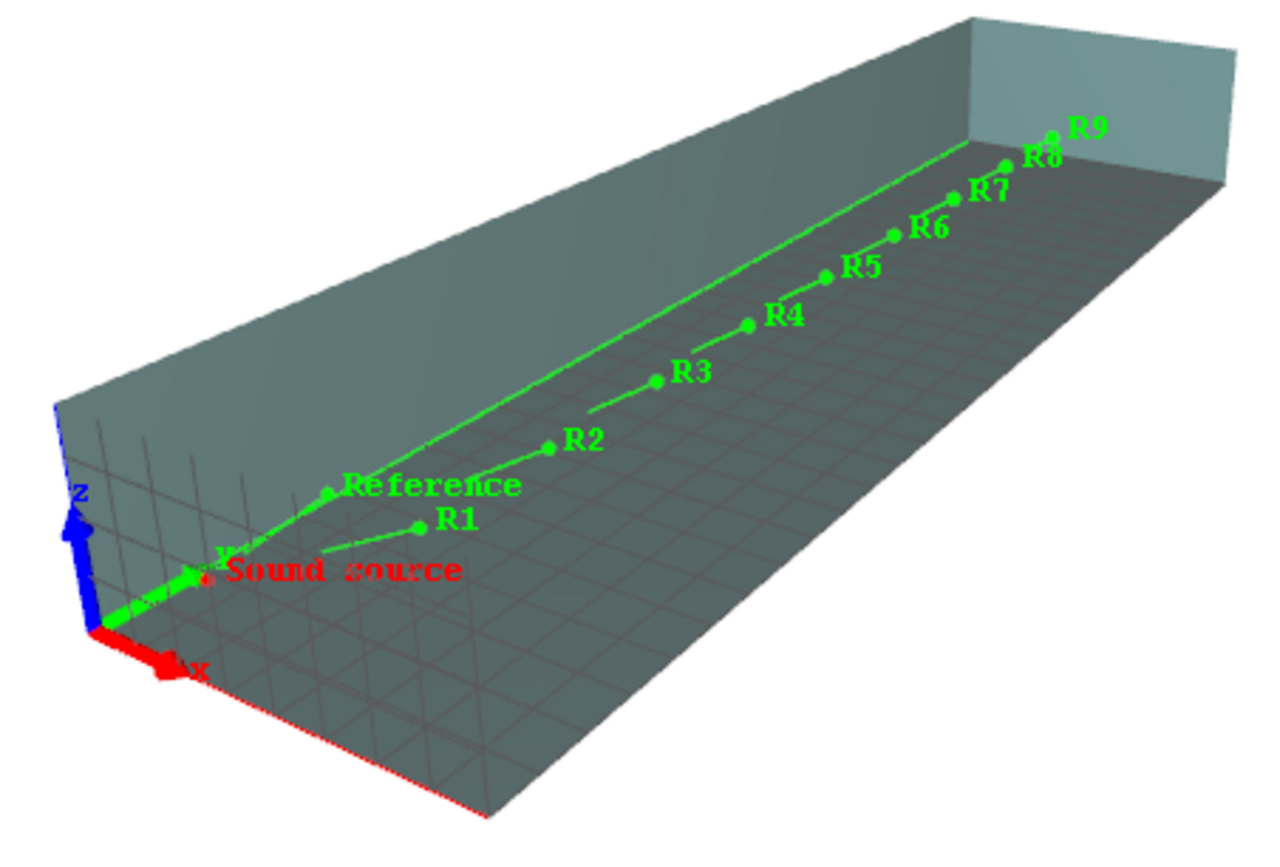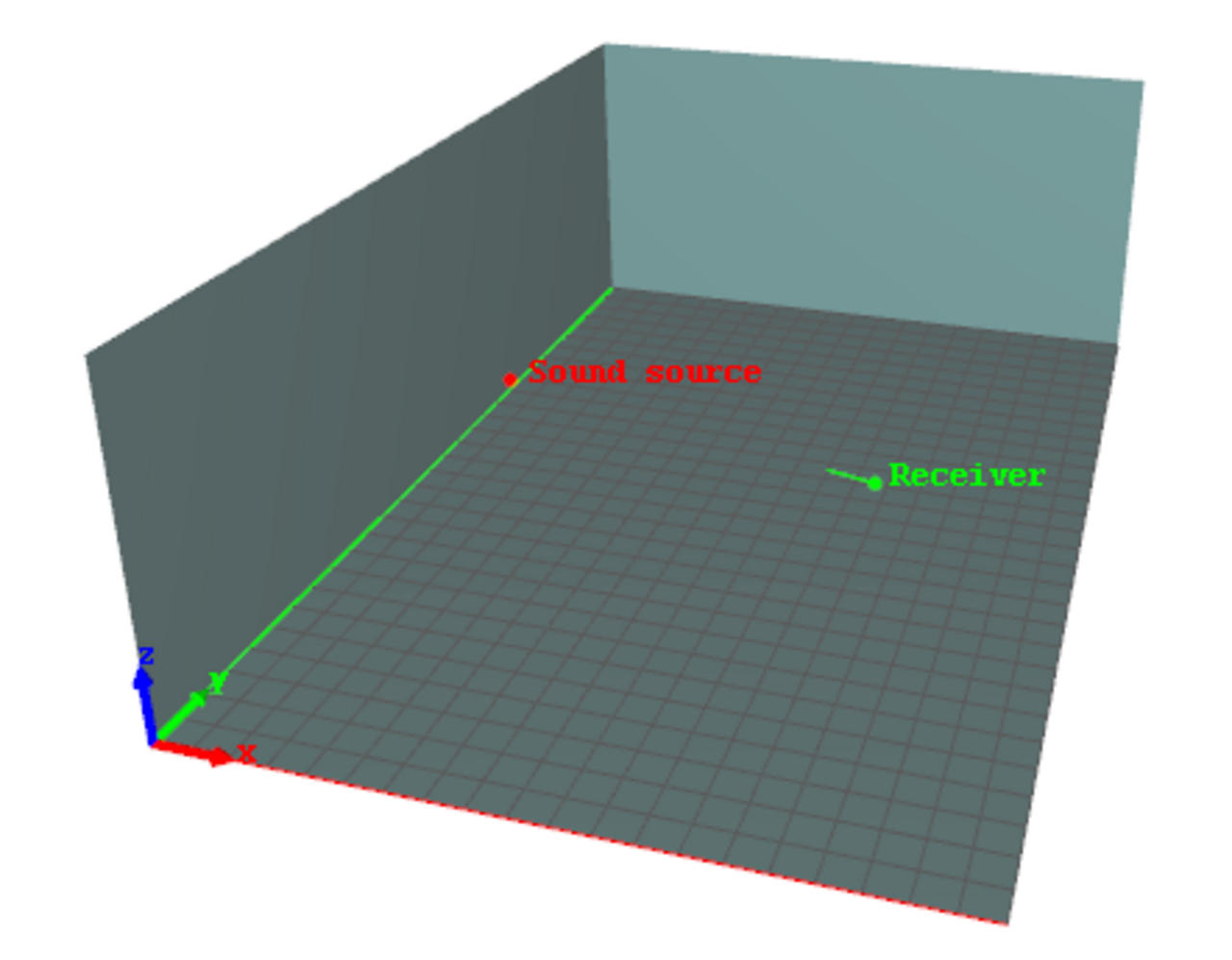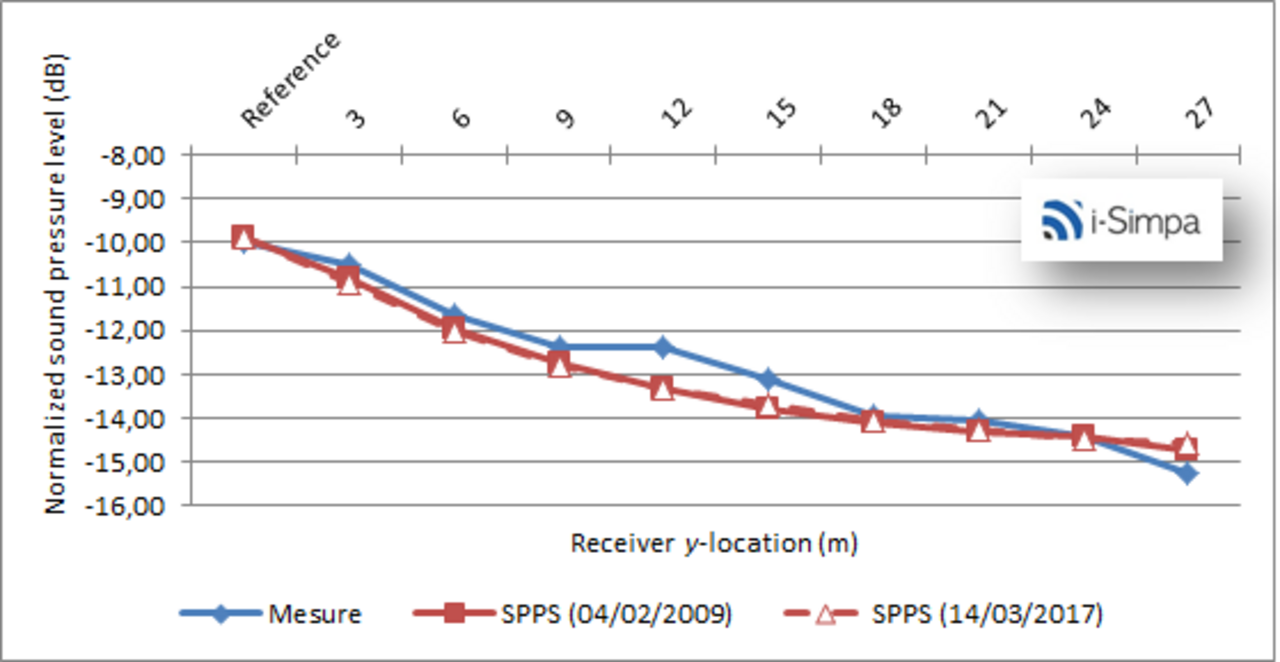All elements of this simulation are licensed under Licence Creative Commons Attribution 4.0 International License.
Low room with non-uniform absorption (comparison with experimental data)
Description
Low room (8m x 30m x 3.85m) with non-uniform absorption, with a single source, 7 receivers along a line and a reference receiver.
What is tested?
Comparison between SPPS and experimental data from [Ondet, 1989].
[Ondet, 1989] Ondet, A. M. , and Barbry, J. L. (1989). “ Modeling of sound propagation in fitted workshop using ray tracing,” J. Acoust. Soc. Am. 85(2 ), 787–796. doi.org/10.1121/1.397551
Reference
CAUTION - The following results present comparisons between numerical simulations carried out with I-Simpa and 'reference' data available in the scientific literature.
- It is difficult to prejudge the concept of 'reference'. The deviation between the simulations and the reference data that can be observed do not necessarily call into question the corresponding simulations but can also be associated with other sources of deviation (modeling assumptions, numerical instabilities, experimental uncertainties, etc.).
- Note also that these comparaisons can also show the limitations of some numerical codes.
What is tested?
Comparison between SPPS and experimental data from [Ondet, 1989].
[Ondet, 1989] Ondet, A. M. , and Barbry, J. L. (1989). “ Modeling of sound propagation in fitted workshop using ray tracing,” J. Acoust. Soc. Am. 85(2 ), 787–796. doi.org/10.1121/1.397551
Description
Low room (8m x 30m x 3.85m) with non-uniform absorption, with a single source, 7 receivers along a line and a reference receiver.
Reference


All elements of this simulation are licensed under a Creative Commons Attribution 4.0 International License.
Results
Normalized sound pressure level
This figure shows the normalized sound level (relative to the source power level) for receivers from 3m to 27m (y-location) to the source (step of 3m) and a reference receiver. The SPPS code shows a very good agreement with the experimental data, with a mean deviation of 0.38 dB and a maximum deviation of 0.90dB, which must be compared with the uncertainties of measures, estimated by the authors at 1dB.
Calculation parameters
Reference
| Parameters | Value |
|---|---|
| Active calculation of Atmospheric absorption | YES |
| Active calculation of diffusion by fitting objects | NO |
| Active calculation of direct field only | NO |
| Active calculation of transmission | NO |
| Calculation method | Energetic |
| Limit value of the particle extinction | 5.0 |
| Number of sound particles per source | 1 000 000 |
| Number of sound particles per source (display) | |
| Random initialization number | |
| Receiver radius | 0.31 |
| Simulation length (s) | 1.500 |
| Time step (s) | 0.005 |




